Market research for a Slovenian sport federation
How to raise the awareness of the sports federation and the popularity of a particular sport to attract young talent and sponsors?
The aim of the analysis is to get to know the existing market situation comprehensively and in detail, to identify the causes of successful and unsuccessful actions, and, with the help of the findings, to formulate an operational and marketing strategy for the “C” Federation of Slovenia.
Note: The federation name has been changed for privacy reasons
Designing the survey for quantitative research
The online survey tackled two managerial decisions:
• To determine the perception of the “C” in the Slovenian population.
• To determine the needs of the target audience (to be able to attract young athletes and the general public).
The purpose of hypothesis formation is to use them as guidance in statistical analysis and to ultimately look for statistically significant differences that can prove or reject the formulated hypotheses. The survey was distributed among the entire Slovenian population and mainly targeted sports institutions, clubs, sports organizations, or groups. The purpose was to find sport-active people or people who follow regularly at least one sport. If the respondents did not fulfill at least one of these criteria, the survey automatically terminated and did not collect responses. 595 fully completed surveys were gathered and used for further analysis. The respondents were female in 51 percent of the cases and male in 49 percent.
I performed basic descriptive analysis for all questions, some of them were followed by comparisons of genders. I used a series of chi-square tests, one-way ANOVA and Friedman ANOVA and reported statistically significant differences (p < 0.05), where they existed.
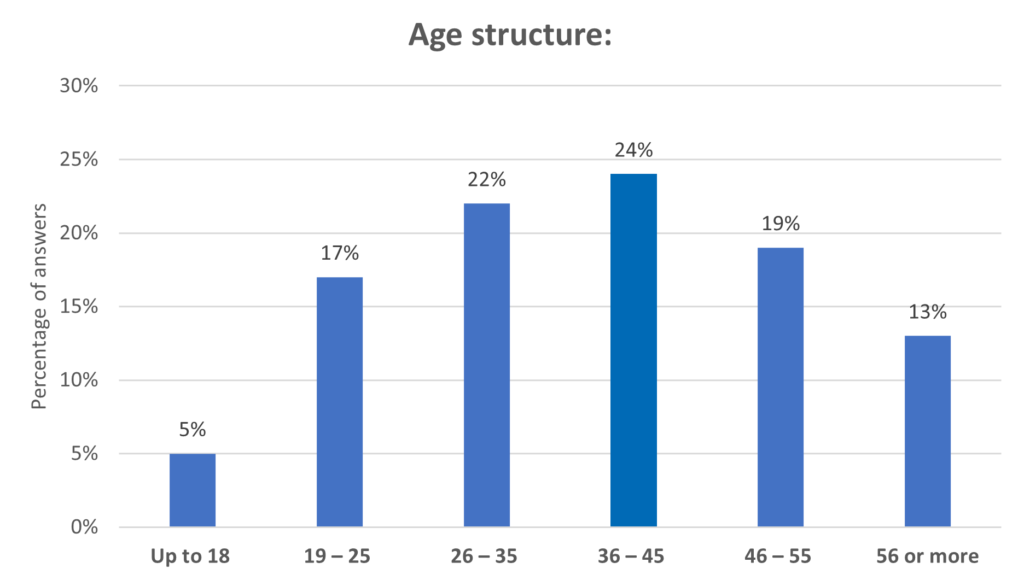
Results of analysis
The main results of the survey show that the general population perceives “C” as an extreme and physically demanding sport. The majority of respondents characterized it as uninteresting and unpopular.
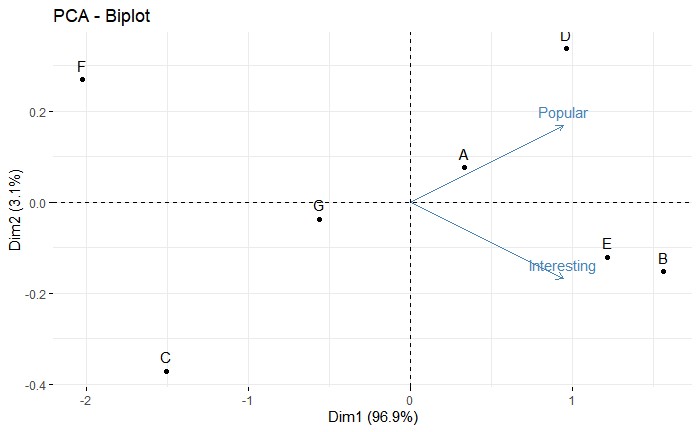
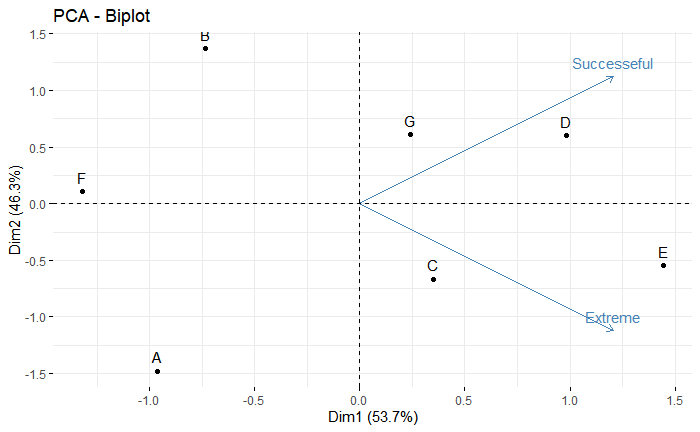
Parents were asked how important the following characteristics (from 1-5) are in deciding which sport their child should play/try. 5 means they are extremely important, and 1 means they are not important at all. The results show that when parents choose a sport to enroll their child in, they are most interested in the infrastructure being nearby (Mean=4.00) or that the sport is offered by the school (Mean=3.00)
As many as 38 percent of men and 20 percent of women said they would try “C” if organizations offered them a free trial.
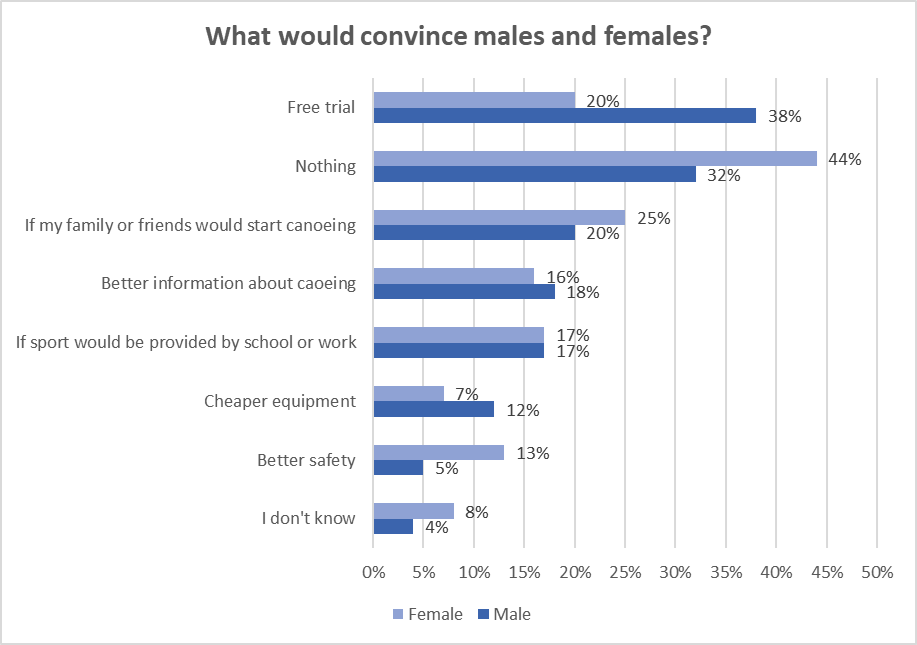
The biggest difference between genders was found in the reasons for watching sports. The most common response from women (41%) when asked why they watch sports competitions is to support the competitors, while the most common response from men (23%) is thrill and excitement.
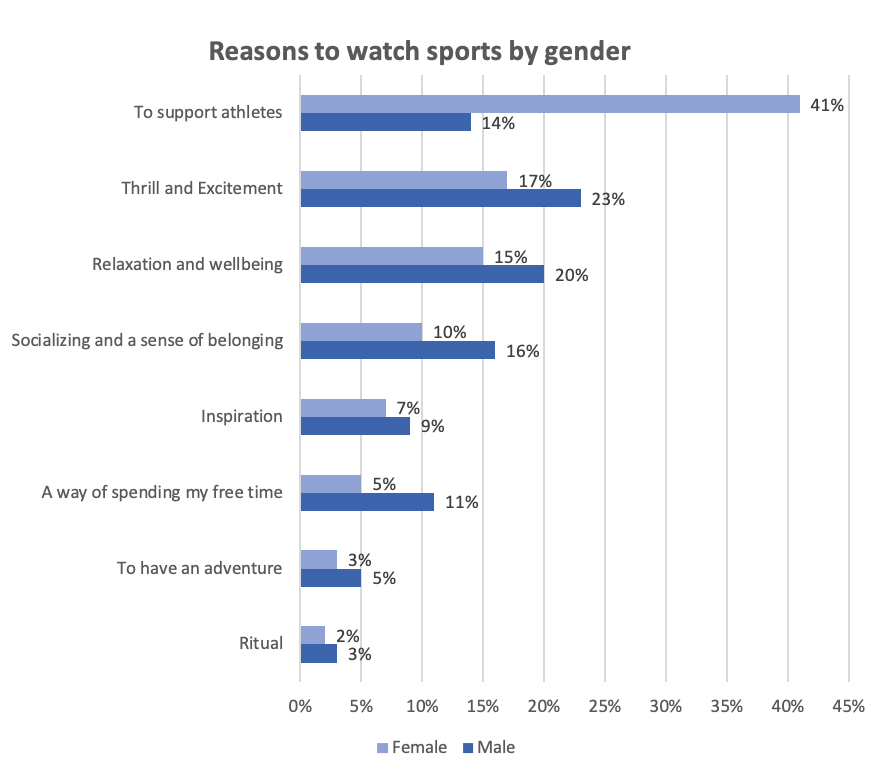
For segmentation purposes, cluster analysis was performed. The following questions were used for analysis: age, gender, whether respondents have ever tried “C”, and what different sports represent to our respondents in terms of extremity, popularity, interest, and success, as well as why they follow certain sports events live or broadcast. The analyzed data had 463 observations. I decided to perform this analysis by using K-means methods since it is the simplest and the most used clustering method for splitting a dataset into a set of k groups. During the analysis, according to the majority of rules the best option was to proceed with two or six clusters, however, we decided to split our observations into three clusters (Cluster 1 = 244 observations, Cluster 2 = 99 observations, Cluster 3 = 120 observations).
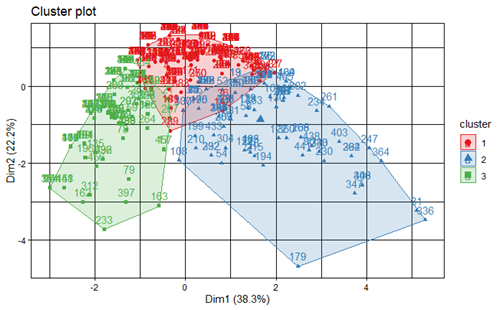
Cluster 1 (predominately males within the 25-46 age range)
Cluster 1 represents the largest group of respondents (estimated at 52 percent) who perceive the popularity of “C” as slightly above average. When it comes to “C” being successful, they do not have either positive or negative opinions however, their perception of “C” as an extreme and interesting sport drops below the sample average.
Cluster 2 (predominately female up to 25 years old)
Cluster 2 represents the second largest group of respondents (estimated at 26 percent) who perceive “C” as the least popular and successful out of all three clusters. When it comes to the extremeness and how interesting they find “C”, their perception is below average and still the lowest of all clusters but ranks a little higher than the perception of the popularity of sport and athletes’ success.
Cluster 3 (predominantly female within the 46-55 age range)
Cluster 3 represents the smallest group of respondents (estimated at 21 percent). However, this group perceives “C” as the most successful, popular, extreme, and interesting than any other cluster, with all four parameters above the sample average.

To elaborate on cluster description and get familiar with our respondents in more detail, they were asked to choose the sports they are predominantly practicing. According to responses, respondents up to 18 years old, who are practicing football (12 percent), and canoeing (11 percent), the top three sports among the 19 to 25 years old age group are basketball, football, and fitness, and only 11 percent chose canoeing. The most practiced sport among 26 up to 45 years old respondents is indoor and outdoor climbing, 2 and 8 percent chose canoeing. When it comes to the 36-45 age group, they chose swimming, aerobics, and cross-country skiing as practiced sports, however, 22 percent of them also mentioned canoeing. Among the 46-55 age group the most preferred sports were swimming, aerobics, and road cycling, and only 17 percent mentioned canoeing as a practiced sport. Respondents 56 years of age and more mentioned yoga and canoeing.
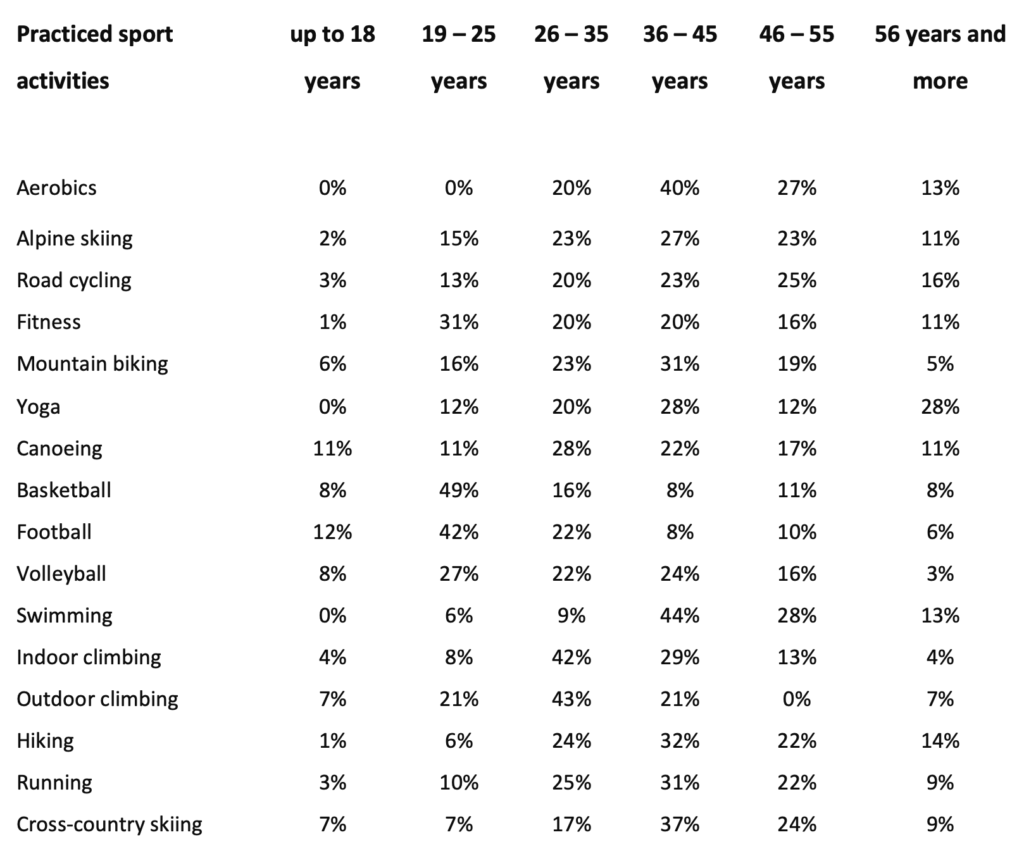
Recommendations
- Offer transport from schools to training sites, since research found the vicinity of infrastructure to be the most important factor for parents when choosing a sport for their children. It is also important for the children that they practice a sport with their friends, and offering an organized transportation federation can enable children to do the sport together.
- Create free packages with a specific provider of equipment for smaller groups to try it out and hang out, which could potentially develop and persuade them to practice this sport on a regular basis.
- Target females and males differently, when promoting for increasing viewership or participation in the sport, since there are big differences in their reasons to watch sports, and have different motivations to try out “C”.
- To improve the perception of “C” and acquire new followers, paying attention to increasing awareness of the athletes’ achievements (with frequent communication through different channels) was suggested, as well as identifying factors that characterize sport as popular and interesting in people’s minds, and focusing on females and males differently.